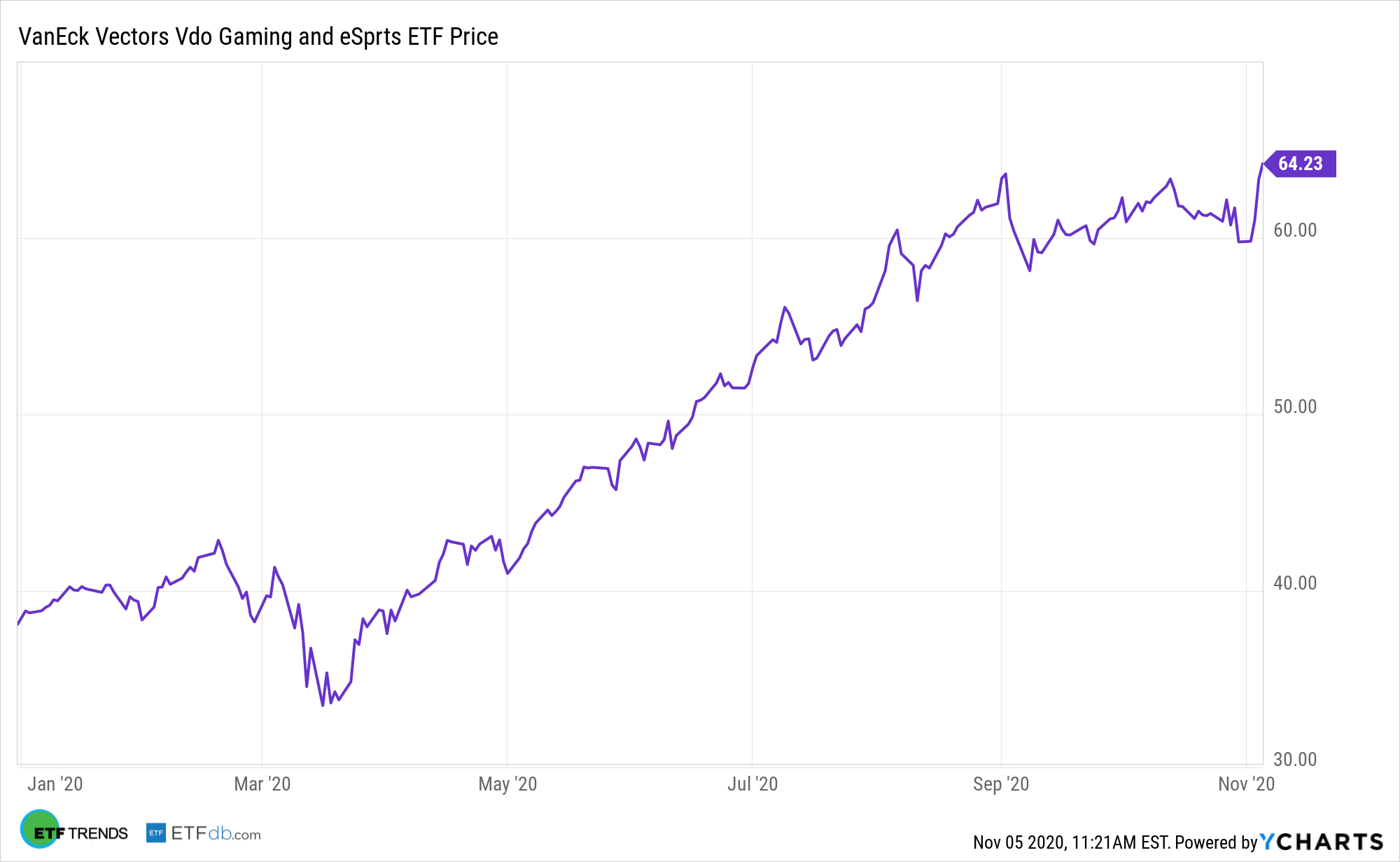Among industry exchange traded funds, the VanEck Vectors Video Gaming and eSports ETF (NASDAQ: ESPO) is turning into a household name, and rightfully so. Yet the fund is backed by more than just sales of game software.
ESPO seeks to track the performance of the MVIS Global Video Gaming and eSports Index (MVESPO). The index is a rules-based, modified capitalization-weighted, float-adjusted index intended to give investors a means of tracking the overall performance of companies involved in video gaming and eSports.
Traditionally, the revenue sources for gaming companies are software (games) and consoles, but as the industry evolves, so are avenues for sales.
“In the mid-2000s, video game publishers began testing the ‘game as a service’ model. In this model, the consumer may bypass the initial cost of purchasing the game, and then pay ongoing fees to continue playing the game and accessing content,” writes VanEck ETF Product Manager John Patrick Lee. “There are a number of different ways the game publisher can generate revenues under this model, including game subscriptions, microtransactions and season passes. While transactions in the service model may entail smaller amounts, the publisher opens the door to an indefinite purchasing lifespan from each consumer, which can increase the total revenues generated from a single game.”
ESPO: Exceeding Growth
Finding opportunities in today’s challenging market environment is not just fun and games. In certain sectors, amid social distancing measures and renewed government lockdowns, certain ETFs are offering investors fun and gains, like those that focus on Esports.
Major game publishers, including some marquee ESPO holdings, are embracing subscription and “as a service” models.

“Take-Two Interactive coined the phrase ‘recurrent consumer spending’ and defines it as revenue generated from ongoing consumer engagement, including virtual currency, add-on content and in-game purchases,” notes Lee. “These revenue streams are specifically grouped to exclude the initial game purchase.”
Bottom line: gaming subscriptions are something consumers will allocate and there’s only more room to grow from here, providing a runway for long-term ESPO upside.
“Activision and Take-Two have essentially adopted reverse approaches to the game as a service model. Activision’s release of a free-to-play game is helping drive consumers to purchase a traditional game, while Take-Two requires an upfront game purchase before consumers are able to spending more on in-game items,” writes VanEck’s Lee. “Recurrent in-game spending is among the trends that are driving the growth of the video gaming industry and making this space, in our view, a compelling investment opportunity.”
For more on innovative portfolio ideas, visit our Nasdaq Portfolio Solutions Channel.
The opinions and forecasts expressed herein are solely those of Tom Lydon, and may not actually come to pass. Information on this site should not be used or construed as an offer to sell, a solicitation of an offer to buy, or a recommendation for any product.

